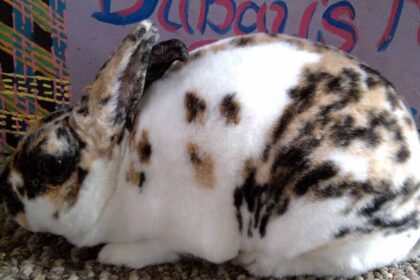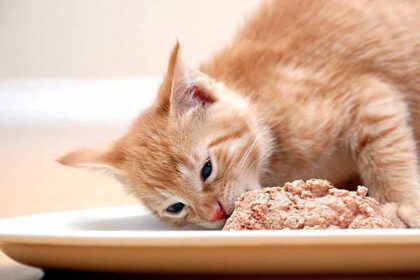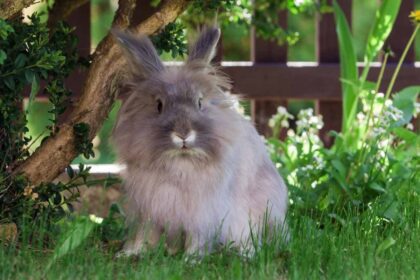Have you ever thought about the possibility of owning a small farm and having your herd of goats? Despite its cute appearance, this distraction-prone bird could become frustrating to handle and keep up with. Every goat owner knows that goats can be problematic from chewing everything to fooling you as a Houdini. The only way to make a goat and an owner relationship a happy one is to understand “Goat Behavior Problems and Solutions”.
Through this guide we will go inside the goat’s mind and use what we learn to understand the behavior they display and also how to overcome the common behavioral challenges. Through the identification of the concerns and practical solutions, you have all the options possible of turning your barnyard into a peaceful place where you can live with your goats, regardless of the mixture of male goats and does you may have.
Understanding Goat Behavior: The Root of the Problem
Reading your goats’ behavioral indicators is the key to determining satisfactory ways of rearing your goat. Goats normally communicate using gestures, and this is a factor that can be used to foster a mutually satisfying and harmonious relationship. How sheep head-but is used to communicate with other sheep, whether the region is expressing playfulness or dominance.
Similarly, cropping can reflect a weakness or even excitement. You can be able to do it by mastering this “goat language”, and detecting the problems during the initial phase. This is all about “Goat Behavior Problems and Solutions” where you get acquainted with goat behaviors and how to solve possible future problems.
This part aims to discuss prevalent behaviors that may stem from missing human contact like species from changing environments, spatial deficiency, or just simply boredom. Through this approach, you tackle the present issue and reduce its chances of happening again, which makes the goats, whether a doe or a new goat, feel at ease and get as good as possible conditions for living.
Common Goat Behavior Problems and Solutions
Destructive Chewing
Goats are natural explorers and alleviate boredom by chewing. However, excessive chewing on fences or structures can be a sign of nutritional deficiencies or lack of enrichment. Provide browse branches, puzzle feeders, or safe chew toys to keep them stimulated, and offer a variety of hay and mineral supplements to ensure they’re getting the nutrients they need.
Escaping
Goats are notorious escape artists, constantly testing fence lines for weaknesses. Reinforce fences with strong materials, eliminate gaps, and bury wire mesh fencing underground to deter determined diggers, including aggressive goats that might try to butt their way out. Creating an escape-proof area within the enclosure, like a sturdy shelter, can provide a haven if they do manage to breach the perimeter.
Aggression
While head-butting can be playful, aggressive behavior like ramming or biting often stems from fear or a dominance struggle. Learn to interpret their body language – lowered ears and flattened tails indicate a threat, which is crucial when integrating a new goat into a herd to avoid conflicts that might lead to aggressive behaviors like head butting. Desensitization techniques, like gradually introducing unfamiliar objects, and calm, confident handling will build trust and reduce their anxieties.
Picky Eating
Goats can be particular about their food. Ensure you’re offering a balanced diet with high-quality hay as the base, suitable for any breed in your goat herd. Supplement with browse branches for variety and keep an eye on their weight. Pickiness can sometimes indicate dental problems, so consult a veterinarian if they’re consistently refusing specific types of food.
Advanced Goat Behavior Issues
Along with the usual matters goats face, we have to also take note of the fact that they can manifest sophisticated tuffs of behavior which would require more in-depth understanding. The section titled “Goat Behavioral Problems and Their Solutions” addresses these struggles and presents ways to circumvent them.
Separation Anxiety
Goats are social animals and experience loneliness when they are placed singly in a small area or away from their favorite buddy, emphasizing the importance of observing herd dynamics when adding a new goat. Several behaviors represent anxiety in goats and these include pacing, bleating excessively, and clinging behavior.
To foster the de-threatening, introduce an animal companion into the enclosure, and then increase the separation period in gradual steps. Lastly, create isolated spots inside the enclosure where the gorillas can feel secure, a practice that can equally benefit a goat herd by providing areas where a new goat or a timid doe can find refuge.
Hoarding Behavior
Some goats indulge in such behaviors as selfishness over food, toys, or even space. For this reason, wolves might kill their cubs pups as a form of natural selection or to ensure survival within their pack. All along solving is based on understanding the cause here.
Give enough food to the goats and have additional enrichment objects for the hoarders as well. This may let the latter take an interest in the enrichment items. The firmness and positive reinforcement will be utilized in helping them to know what taking turns is.

Head-Shy Behavior
Prolonged or uncomfortable gentle handling of the head can be stressful to certain goats; just imagine how scared they must get if they have any such negative experiences on repetition. Building trust is crucial. You may begin with soft strokes on their bodies and then add pressure to their head region, being mindful not to provoke a head butt from an aggressive goat.
Give tasty treats and deliver positive reinforcements such as praise during training to make the experience more pleasant. Methods that involve powering and respecting their space are recommended.
Tips for a Peaceful Coexistence
The essence of doing proper things with your goat that involves peace and repetition is to set an atmosphere for a peaceful and predictable environment. “Routine Care and Behavior Problems in Goats” teaches goat keepers to prioritize a set schedule and stick to this schedule for good goat health.
Through standard routines such as feeding, milking, and cleaning, the animals’ mind-body system responds to positive stress which makes them feel confident by following the set norms.Not only that, the training process in positive reinforcement ways, such as treats and verbal praise, to teach the dogs good behavior. Customers with this kind of personal attention are more likely to be satisfied and treat their consumer interactions more conveniently, especially when seeking advice on managing an aggressive goat or introducing another goat to their farm.
Also, provide ample space for them to roam and design climbing structures that would encourage physical exercise of the goats.Additionally, ensure that there are enrichment activities to occupy the minds of the goats, encouraging positive interactions in the goat herd and reducing chances of aggression.
Always keep in mind that if you encounter some species with very complicated behavioral issues, that prevent you from achieving proper results, refer those cases to the nearest animal shelter or veterinarian. They can be a safe haven during long fights, which on some occasions might be hard to defeat, especially if dealing with an aggressive goat or a male goat asserting dominance.
Building a Strong Bond with Your Goats
You can find the answers to efficient management and a contented herd by deciphering the intricacies of goat behavior. With the knowledge from this “Goat Behavior Problems and Solutions” guide, you can handle simple problems and handle more difficult ones. Recall that routine, reinforcement, and an engaging environment are all beneficial to goat health.
A solid relationship will develop as you take the time to comprehend their requirements and language. The satisfaction of creating a tranquil barnyard paradise and the delight of engaging with these clever animals are just two of the incalculable benefits of maintaining a calm and polite relationship with your goats.













